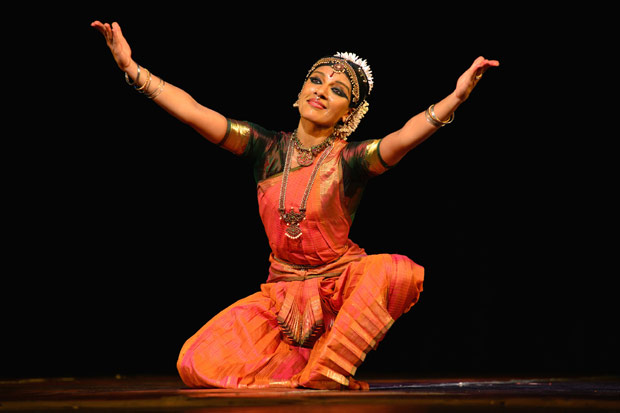
© Amanulla. (Click image for larger version)
Aparna Ramaswamy
They Rose at Dawn
New York, Joyce Theater
7 October 2015
www.ragamaladance.org
www.joyce.org
Into the Woods
The young bharatanatyam choreographer and performer Aparna Ramaswamy, co-director of the Ragamala Dance Company (based in Minneapolis) is currently sharing a week at the Joyce Theater with Dance Heginbotham. Thanks to festivals like Dancing the Gods and Drive East, New York has become a magnet for Indian classical dancers, and we’re the richer for it. (Another group, Nrityagram, is performing at Fall for Dance this week.) India has one of the richest, most varied, and most ancient dance traditions in the world; on the evidence of these festivals, these traditions are also very much alive, and evolving in exciting ways. (One artist we haven’t seen in too long is the kuchipudi dancer and choreographer Shantala Shivalingappa.)
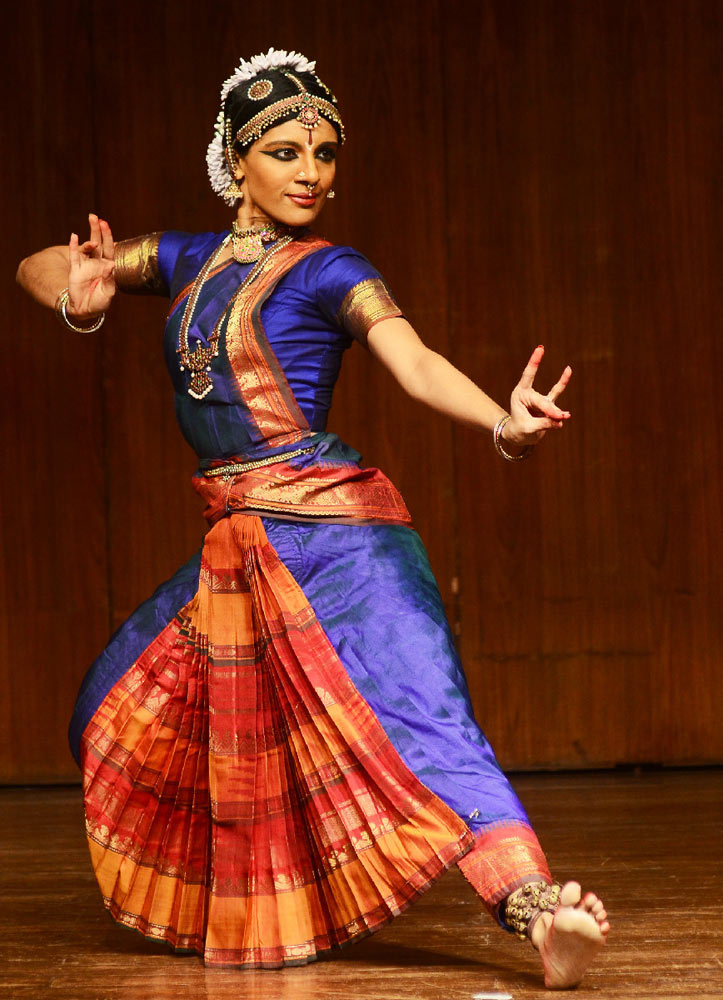
© and courtesy of NCPA. (Click image for larger version)
Ramaswamy’s brand of bharatanatyam is notably vigorous, crisp, dynamic, and strongly rhythmic. Her dancing is in constant interplay with her excellent ensemble – violin, flute, mridangam drum, and two vocalists – who specialize in the Carnatic musical style of southern India. Both the violinist and one of the vocalists are women (an anomaly). The singer, Preethy Mahesh, is particularly compelling, with a silken, deep, caressing voice that seems to carry the music and dancing in its wake. Her singing, along with the complex rhythms of the mridangam, animates Ramaswamy’s dancing.
The evening was entitled They Rose at Dawn and aimed to illustrate the ways in which women “are the primordial source of all creation,” “carriers of ritual and culture and arbiters of humanity’s relationship to the divine” (this according to the program). It stopped well short of this goal; in many ways it was simply a traditional bharatanatyam recital, with the usual mix of pure dance and abhinaya, or danced mime. There were four pieces on the program, two of them quite long, long enough to meander, particularly for those of us who could not understand the words of the songs. The problem of translation is always an issue. As in flamenco, Indian dance reflects and interprets, however loosely, the lyrics of a song. Unless the choreography is very clear and well-paced, one can easily get lost. It takes a really great choreographer to create the illusion of complete transparency.
Ramaswamy’s choreography, though constantly lively, doesn’t have that kind of clarity or narrative arc. The most successful pieces on this program were the final two, which were also the shortest. In one, she showed a family preparing for bed while a stag loped through the forest after a doe. (The poem and its accompanying dance were meant to evoke the interconnection between everyday life and nature.) Here, Ramaswamy’s eyes – a particularly expressive instrument in Indian dance – glowed with happiness and warmth. Her fingers traced raindrops falling from the sky, a storm brewing. Then she became a mother putting her child to bed. Later, she transformed herself into the stag. What a joy to see her lope across the stage in buoyant, nervous jumps. In the final piece, a fast-paced, abstract dance, her feet pattered playfully, toying with the beat of the drum.
Ramaswamy is a natural allegro dancer; she’s high-spirited, warm, vivacious. But, at least tonight, she didn’t seem inclined to delve into the contrasting qualities of languor or sensual ardor that are such a vibrant part of bharatanatyam. The varnam, a song of longing for oneness with the beloved, was not very different from the lively rhythmic dance that closed the show. In fact, what was missing throughout was a sense of contrast in mood, tempo, or dynamics.

© and courtesy of NCPA. (Click image for larger version)
Ideally, a solo program of Indian dance takes you on a voyage into the imagination, through a variety of images and emotions. Ramaswamy’s They Rose at Dawn was a little too steady, to one-dimensional, like a drive down the freeway rather than through the woods.












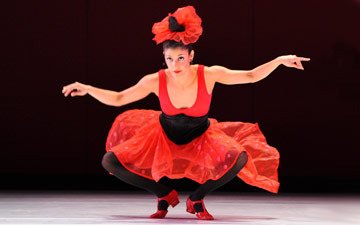

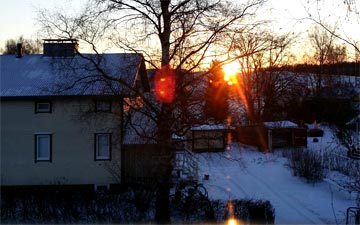

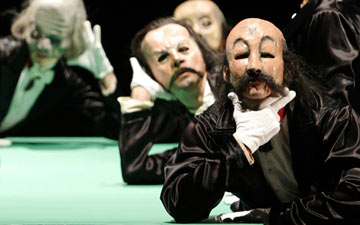
You must be logged in to post a comment.